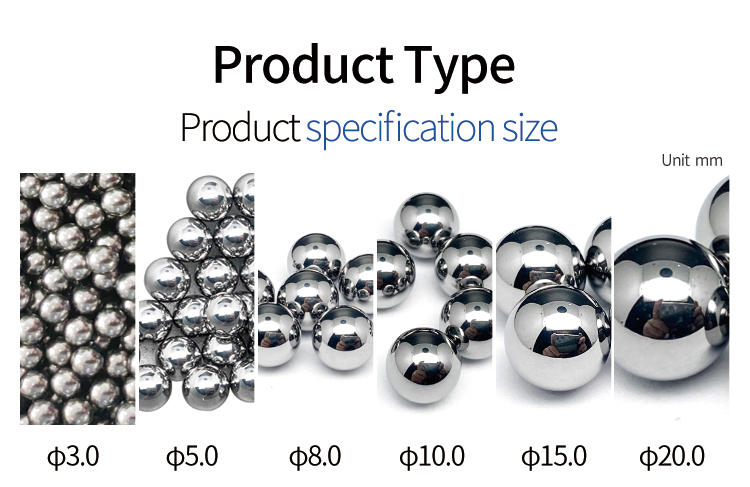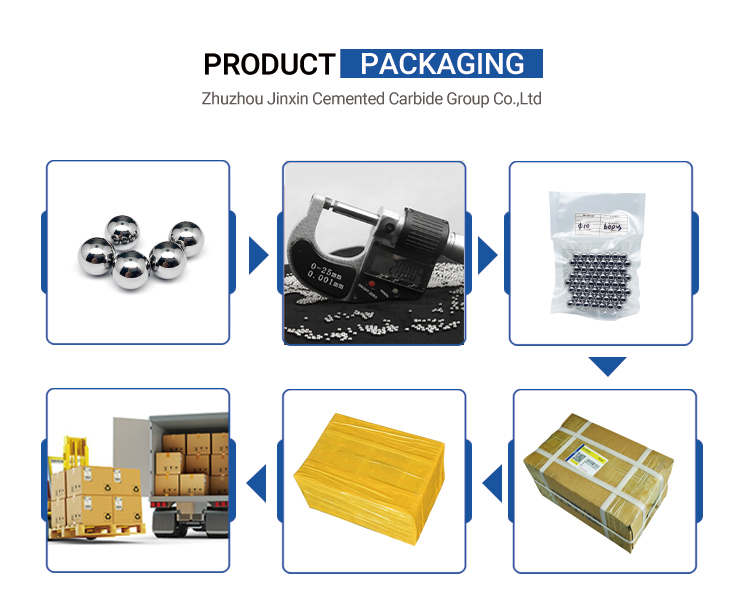| Availability: | |
|---|---|
| Quantity: | |
carbide ball
Jinxin
Product Description
Tungsten carbide valve seats Description
Tungsten carbide valve seats for precision machining have been widely used in many fields, especially under harsh working conditions, due to their excellent properties such as high hardness, wear resistance, high temperature stability, oxidation resistance, corrosion resistance and high strength. It can not only ensure the sealing and stability of the valve, but also extend the service life of the valve and improve the overall performance of the system.
Tungsten carbide valve ball wear in abrasive wear, erosion and abrasion, etc. than tool steel, stainless steel, iron and brass high 100 times, rigid than steel high 2 to 3 times higher than cast iron and Brass 3 to 4 times higher, and the impact resistance of hardened tool steel similar. Meanwhile, the high strength tungsten carbide valve ball valve, surface finish and to be high, when paired with other materials, low coefficient of friction than steel, can significantly reduce the contact surface friction, reduce operating torque.
Tungsten carbide valve seats Applications
Tungsten carbide valve seats are widely used in material conveying pipelines such as polysilicon, coal chemical industry, power plant ash removal, mud and boiler slag discharge. Especially in high temperature, high pressure, strong corrosive and solid particle-containing slurry and powder conditions, tungsten carbide valve seats are more widely used.
Specific valve types
Tungsten carbide valve seats are commonly used in valves such as hard-sealed ball valves, Venturi black water control valves, pulverized coal control valves, disc valves and slide valves. These valves need to withstand severe impact, wear and corrosion during use. Tungsten carbide valve seats can effectively ensure the sealing and stability of the valves.
Advantages and effects
Valves using integrally sintered tungsten carbide as control parts have a longer service life under harsh working conditions. For example, at a temperature of 450°C, the service life of the Venturi black water control valve and pulverized coal control valve using integrally sintered tungsten carbide can reach 12 months.
Tungsten carbide valve seats Parameter
| Grade | YG6 | YG8 | YG6X | YL10.2 |
| HardnessHRC | 89.5 | 89.5 | 91 | 92 |
| Bending strength | 1800MPa | 1700MPa | 2100MPa | 4000MPa |
| Density | 14.95 | 14.75 | 14.95 | 14.5 |
| Grain size | 1.6um | 1.6um | 1.0um | 0.8um |
| Porosity | A04B00 | A04B00 | A02B00 | A02B02 |
Tungsten carbide valve seats detail show



Ball mills are widely used in metallurgy, mining, electric power, building materials, chemical industry and other fields, and are the most commonly used crushing equipment. Grinding media are balls or cylindrical objects that roll in the ball mill. The grinding media of ordinary ball mills are mainly metal balls and cylinders, while in the ceramic production industry, ceramic grinding media are mainly used, followed by natural flint and pebbles. The ceramic grinding media on the market in my country mainly include alumina, zirconium oxide, silicon carbide, silicon nitride and other series.
